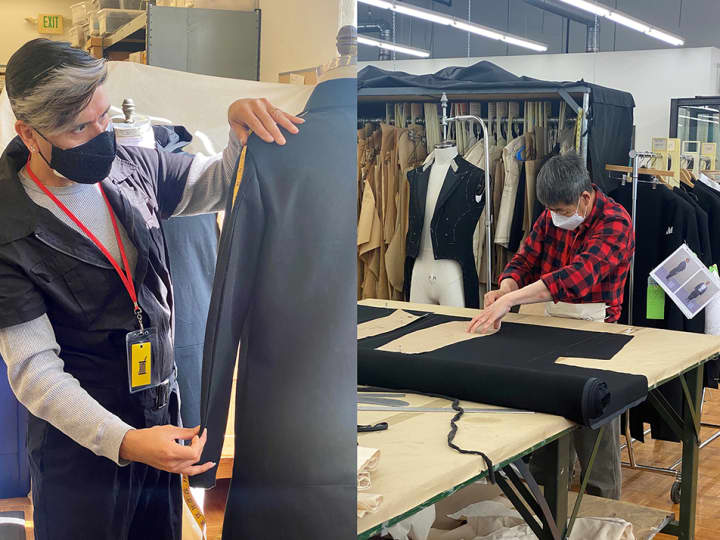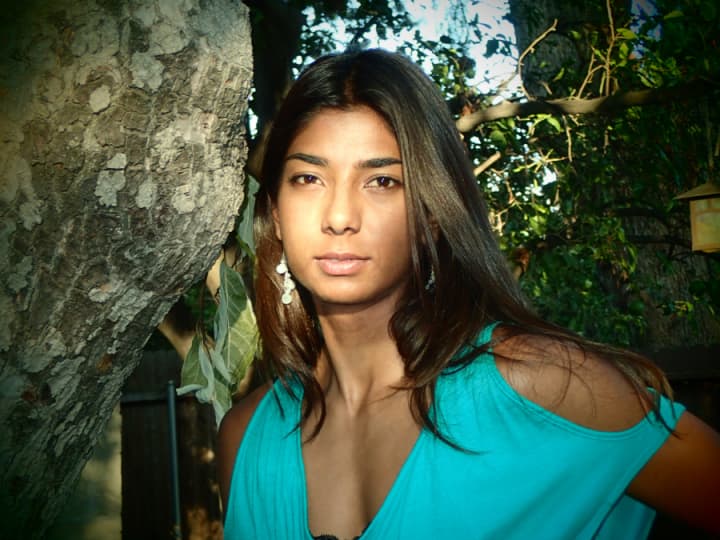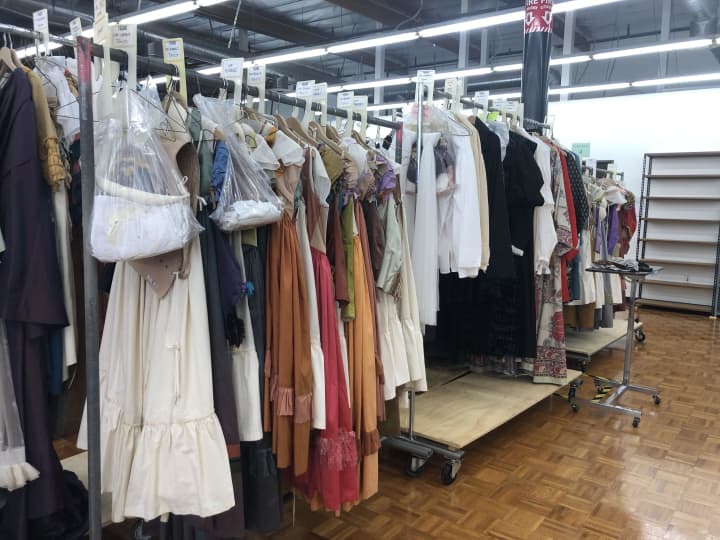When you think about fashion designer Christian Lacroix, you might think of his beautifully vibrant couture creations beloved by movie stars like Helen Mirren and Kirsten Dunst. Or maybe you think of the hilarious Jennifer Saunders as Edina Monsoon opining that—of course—her incredible outfit is “Lacroix, sweetie” in the beloved British comedy television series Ab Fab.
But what you may not know is that Christian Lacroix lent his talented vision to countless theatrical productions around the world, even before his time at the helm of his eponymous fashion line. And indeed, LA Opera’s new production of The Marriage of Figaro, which was supposed to open on June 6th, would have featured dazzling costumes designed by none other than Mr. Lacroix himself. Jeannique Prospere, LA Opera’s Interim Costume Director, shared how these costumes made their way from sketches on the page to the operatic stage.
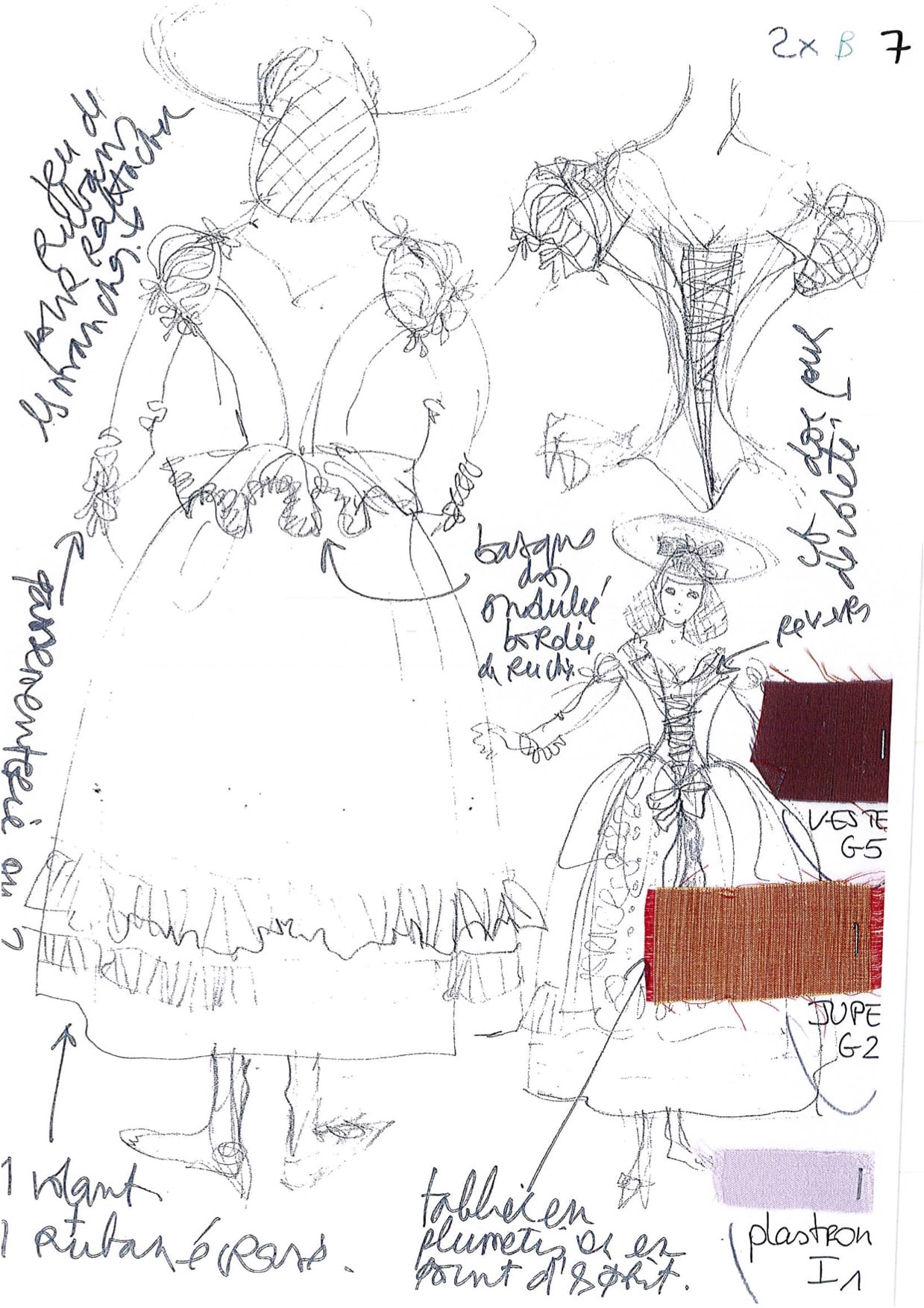
Sketches of a costume with color swatches
The process began with the exhaustive research Mr. Lacroix conducted for inspiration. His academic background is in museum studies, and his designs reflect this passion. Lacroix’s couture work was especially known for luxurious and reimagined historical details. According to Prospere, he applies this same keen eye to his designs for opera-- and she got to witness this firsthand on a trip to Paris.
You can see Mr. Lacroix’s vision in the sketches that he created. Prospere mentioned that the designer is particularly specific about fabric and color choices, and he therefore attached swatches of his preferred fabrics onto the sketches as he created them.
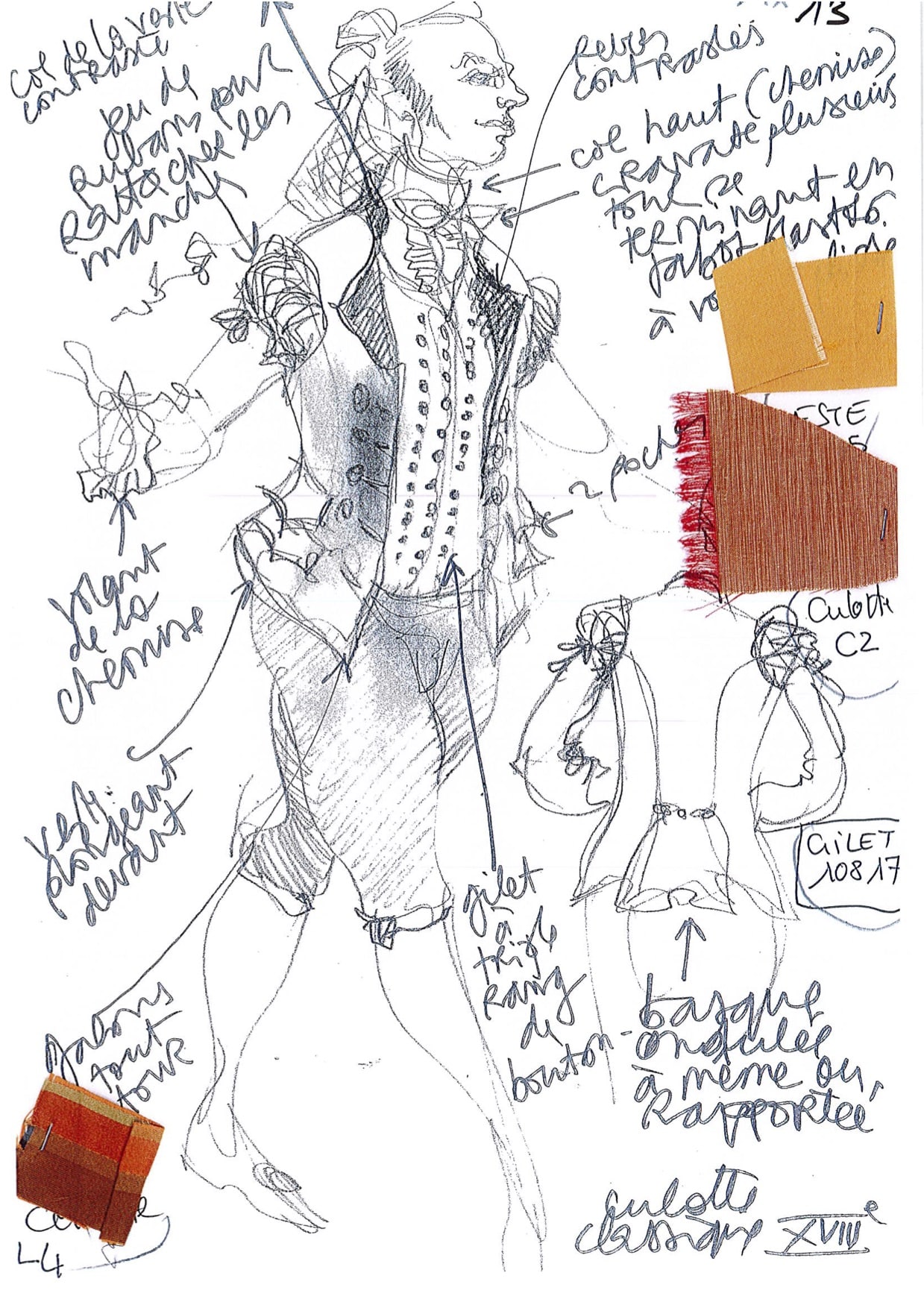
Sketches of a costume with color swatches
This production of The Marriage of Figaro is set in the 18th century. The principal costumes are considered to be very traditional. But Figaro, and the chorus costumes—the peasants—are heavily inspired by Spanish painter Francisco Goya’s early 19th century paintings in a heightened, fantastical way using luxe silks and satins in the place of simpler fabrics.
Much of the fabric used on the principal costumes was not something that could be easily sourced. Mr. Lacroix and his assistant Jean-Philippe Pons, would find unique fabric and trim in French markets and antique collections. In the image seen below, the Count’s jacket was accented with a stunning floral applique that was cut from a vintage French brocade.
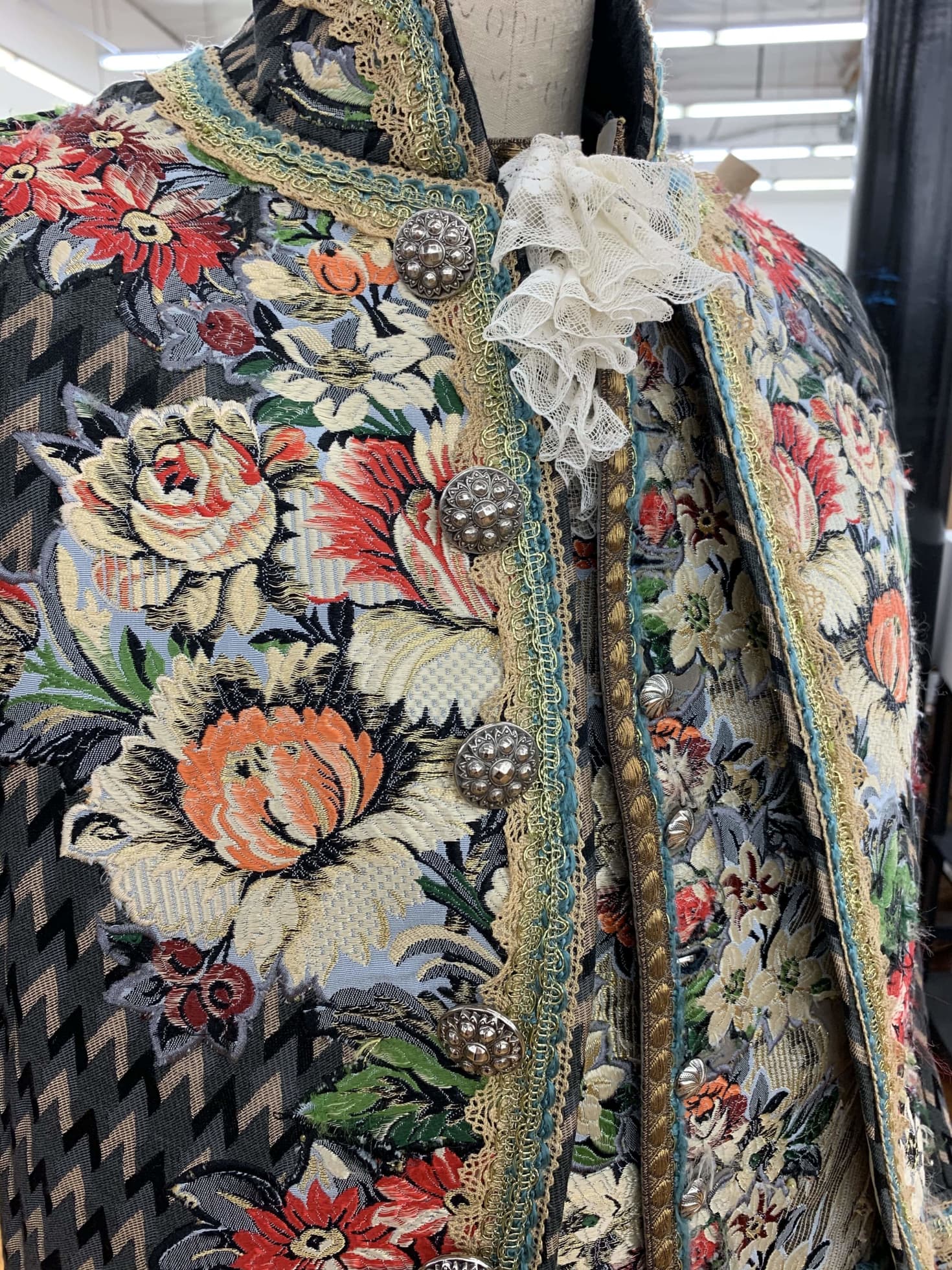
Details of The Count's coat
And lest you think Mr. Lacroix cares only about the most noticeable aspects of his designs, you’d be mistaken. An array of vintage and artisanal trim pieces were laid out for the designer to review, and match the most beautiful trim piece with the correct garment. Every bit of ribbon and lace was approved by Mr. Lacroix himself.
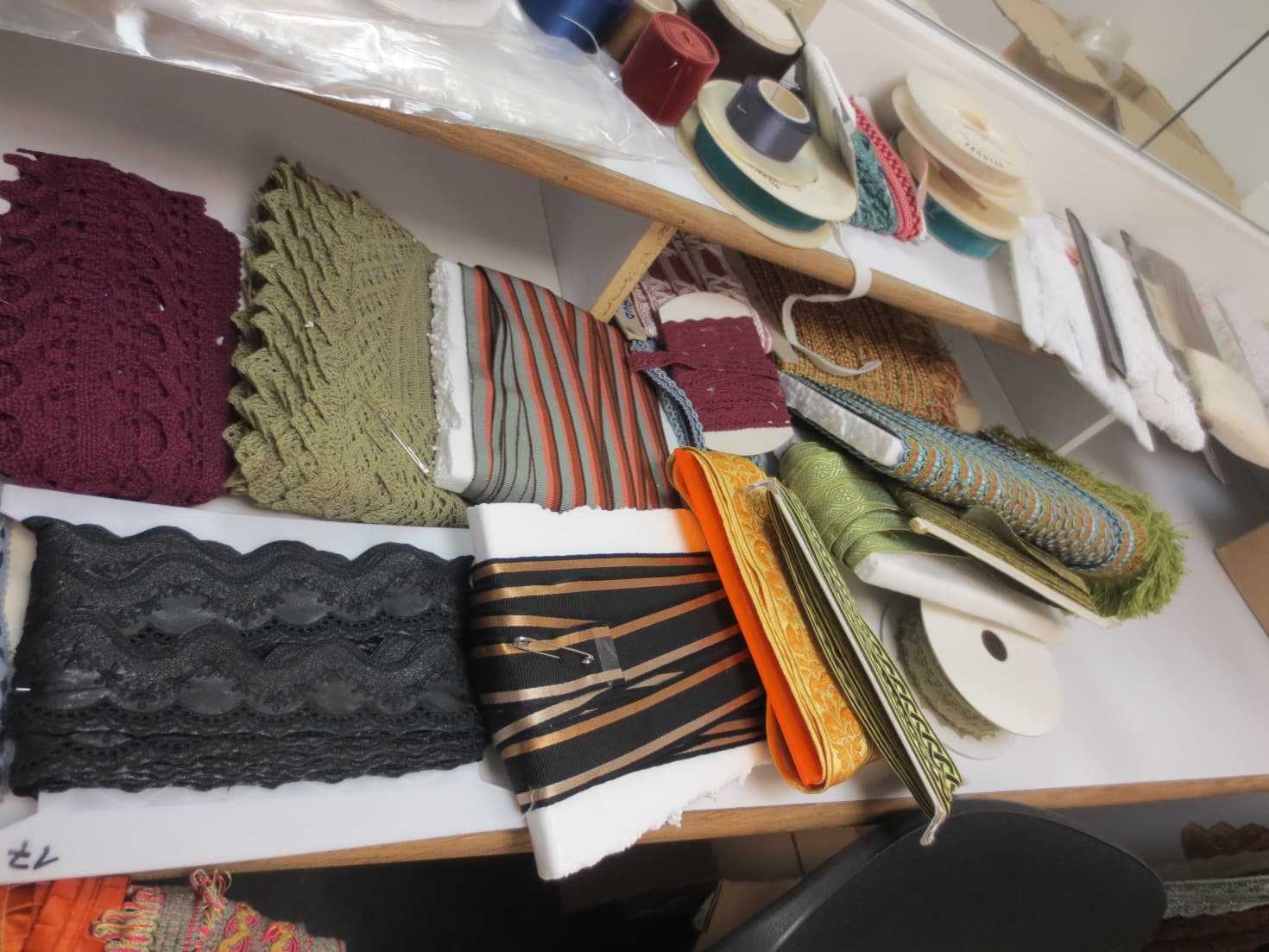
Fabric trims laid out
While some pieces were worked on at the Théâtre des Champs-Elysées and Opéra National de Lorraine, a few of the costumes warranted a little extra couture flair. Enter the Atelier Caraco, a design studio in the center of Paris that helps major fashion houses assemble particularly difficult technical designs. One of the beautiful garments made there was the Countess’ deep red gown. "The Atelier gave my visit to Paris a little taste of the Parisian fashion experience that I've always dreamed happens at the French couture houses," Prospere shared.
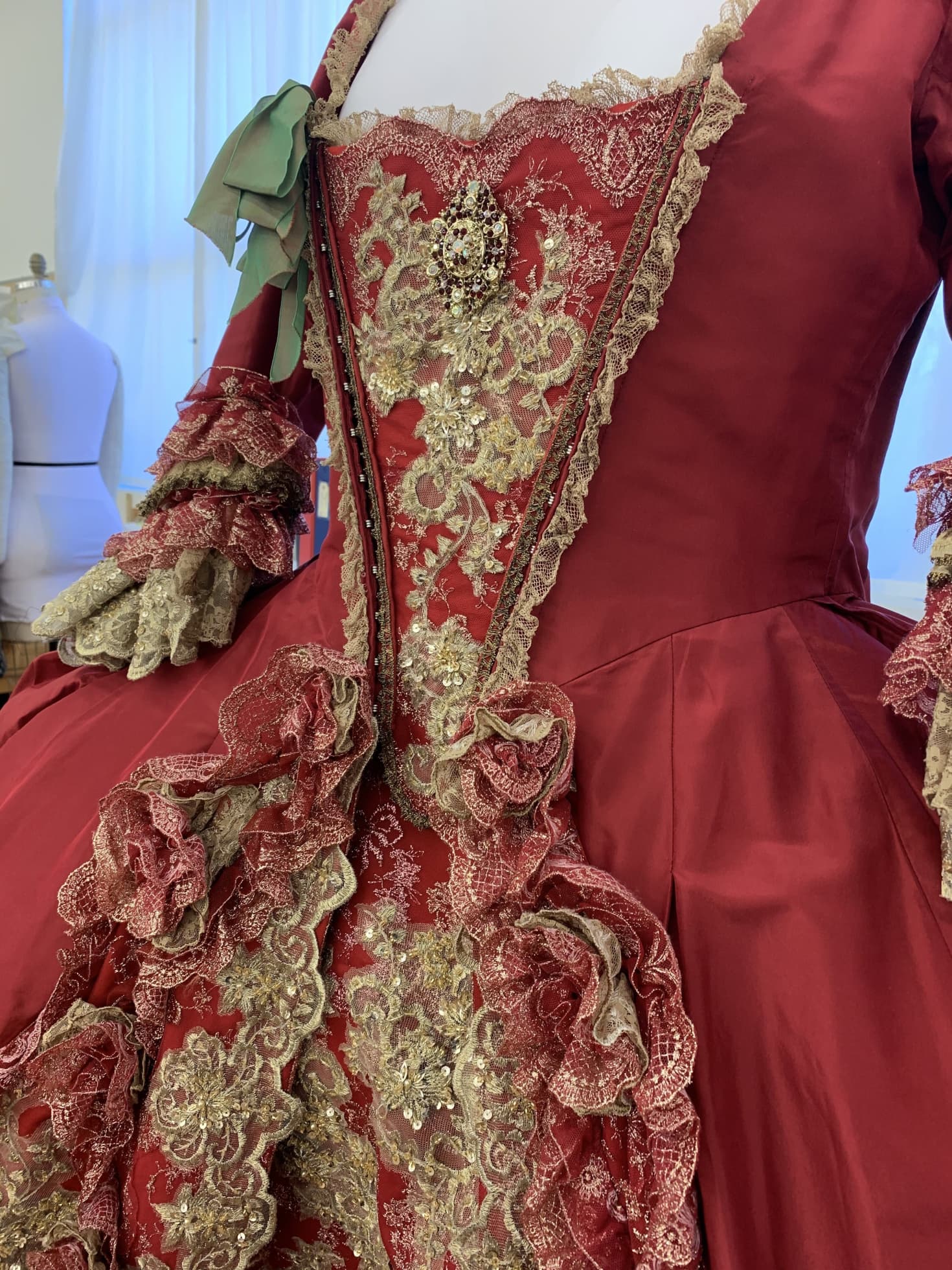
Details of The Countess' dress
Once the finishing touches—and trim—were affixed to these fantastical creations, the costumes were ready for their stage debut. "The details in these clothes cannot be seen from the back row of an opera house," Prospere mused, "but they create a glow to the finished product that makes the costumes seem like they are magic from any seat in the house."
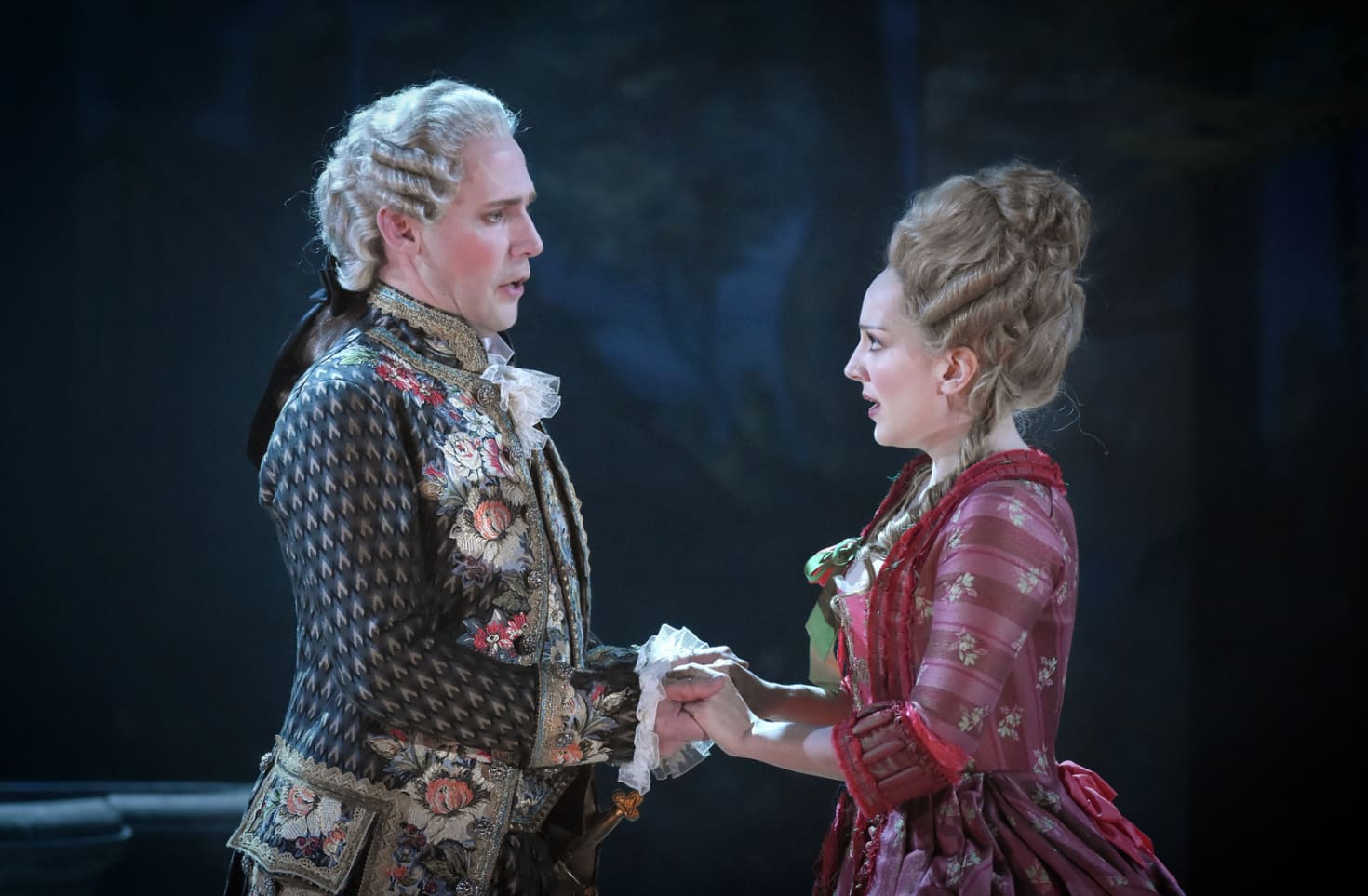
The costumes’ journey did not end on the Parisian stage (the next stop was actually Opera National de Lorraine in Nancy, France before it made its way to LA). At the conclusion of the opera’s run, the costumes were sent from France to Los Angeles to begin fittings. And while this all was transpiring, the hardworking LA Opera costume team began working toward creating costumes from scratch in sizes to fit our varied cast of chorus and Principals. Prospere was tasked with coordinating with Mr. Lacroix to ensure that these additional costumes were up to his standards.
But when the Stay at Home mandate was implemented mid-production, the costume staff had to adjust operations accordingly. In order to be as safe as possible, our dedicated team worked on some of these elaborate creations from their home studios. In the photo below, a chorus lady costume was diligently worked on from home by the talented hands of Master Cutter and Draper, Maria de la Mora.

A new in-progress Chorus Lady costume
The LA Opera costume team was particularly excited to work on this production, especially with the excitement of executing Christian Lacroix’s designs. “They really loved all the pretty fabrics, details, and colors, and it was so vibrant—it was a really good feeling to work on this production,” shared Prospere. “We are looking forward to working on it again and seeing it to fruition on the LA Opera stage.”
So while our team eagerly anticipates bringing this production to life in the future, we join them in excitement. We cannot wait to witness the results of the hard-work and coordinated, international effort of designers, seamsters, drapers and all the artists who work in tandem to turn pencil sketches into shimmering jackets and sparkling gowns—a veritable couture feast for the eyes to accompany Mozart’s glorious musical masterpiece, The Marriage of Figaro.

